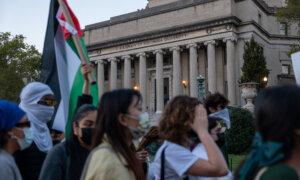Medieval universities generally were governed by their faculties. But faculty governance didn’t prevail in the United States until a few decades ago. It was more common for a university president to rule a campus, or a dean to rule his department, with near-dictatorial power. This was still true in 1985 at the small private Oklahoma university where I received my first full-time academic job.
Dictatorship means that the level of tolerance and freedom at an institution depends on the whim of the dictator. And university dictators could be very intolerant, as the following story illustrates:
In 1964, Sen. Barry Goldwater (R-Ariz.) was the Republican nominee for president against the Democratic incumbent, Lyndon Johnson. Goldwater was a conservative icon and drew many enthusiastic young volunteers into his campaign.
Among the volunteers was a young University of Montana law student named Gerald Neely. But the then-reigning law school dean didn’t approve of Sen. Goldwater. When the dean found out Neely was supporting Goldwater, he called the young man into his office and told him that if he wanted to stay in law school, he had to quit the Goldwater campaign. Otherwise, the dean would expel him.
The Toxic University Model
Despite the baleful results of academic dictatorship, it may, in fact, be the only way to govern the dysfunctional university model. Let’s reconstruct that model.First: Collect in one place several thousand adolescents and post-adolescents, all of them heavily hormoned, most of whom are away from home for the first time. Ensure that most of them don’t value learning for the sake of learning; they want the university degree either to improve their job prospects or postpone the need to get a job.
Second: Cram them in dense housing (preferably male and female together), impose few rules of good conduct, and ignore or even encourage sexual promiscuity.
Third: Add a sprinkling of adults, but make sure most have no training in human behavior, aren’t responsible for the consequences of their ideas, have little or no experience in the “real world,” and often harbor resentment against those who do.
Fourth: Ensure that authority is so fragmented that no one person has the power to do much of anything. Require administrators to pander to transient faculty and student desires if they wish to keep their jobs.
Fifth: Add a band of Marxist and other radical organizers attracted to the opportunities for mischief presented by thousands of naive students and hundreds of resentful professors.
Sixth: Add a certification process largely based on “inputs”—funding, equipment, etc.—rather than actual teaching results.
What could possibly go wrong?
A Closer Look at the Toxic Model
Human nature has certain commonalities, but most people also respond to their environments. Those environments provide incentives and rules that encourage either good behavior or bad behavior. The university environment often encourages bad behavior.Perhaps the most serious defect in the university model (imitated more and more by public school systems) is stratifying people by age. When people associate with those of different ages, good things happen: Older people serve as role models and as teachers for younger ones. The ideals and energy of younger people inspire their elders.
But the college and university population consists mostly of people in a very tight age range—generally between 18 and 24. This is when most people are inexperienced and impulsive, free from family responsibilities, and insecure enough to take their clues from the mob. No wonder “the student body” (as academics call it) is turbulent and foolish.
Dictatorial governance, intelligently applied, may be able to control the turbulence. Governance by faculty members of outstanding character and sense might be able to control it also. But dictatorial governance has been superseded by faculty governance, and most faculty members bear little resemblance to the legendary teachers of the past.
Since the 1970s, faculties have been swelled with leftist ideologues. Universities make no consistent effort to prevent those ideologues from propagandizing and inducing students to parrot their ideology.
Nor do universities make any consistent effort to train professors in the art of teaching. That’s why so many professors “teach” merely by lecturing and answering questions.
Universities do ask students to fill out forms about their instructors. However, young students know little about pedagogy, so the forms mostly just reveal which professors are best at courting popularity. Institutions should poll students several years after graduation to learn which professors affected them for the best. But few universities do that.
Finally, universities hire professors who have never done what they purport to teach. Most law professors, for example, are hired with little or no experience practicing law. (Unbelievable, but true.) Most history professors have never participated in diplomacy, war, official decision-making, or the economic activities about which they tell their students. Few economics professors have operated small businesses, even though small businesses dominate the U.S. economy.
All of which leaves “the groves of academe” floating apart from reality and unaffected by the consequences of what it does.







